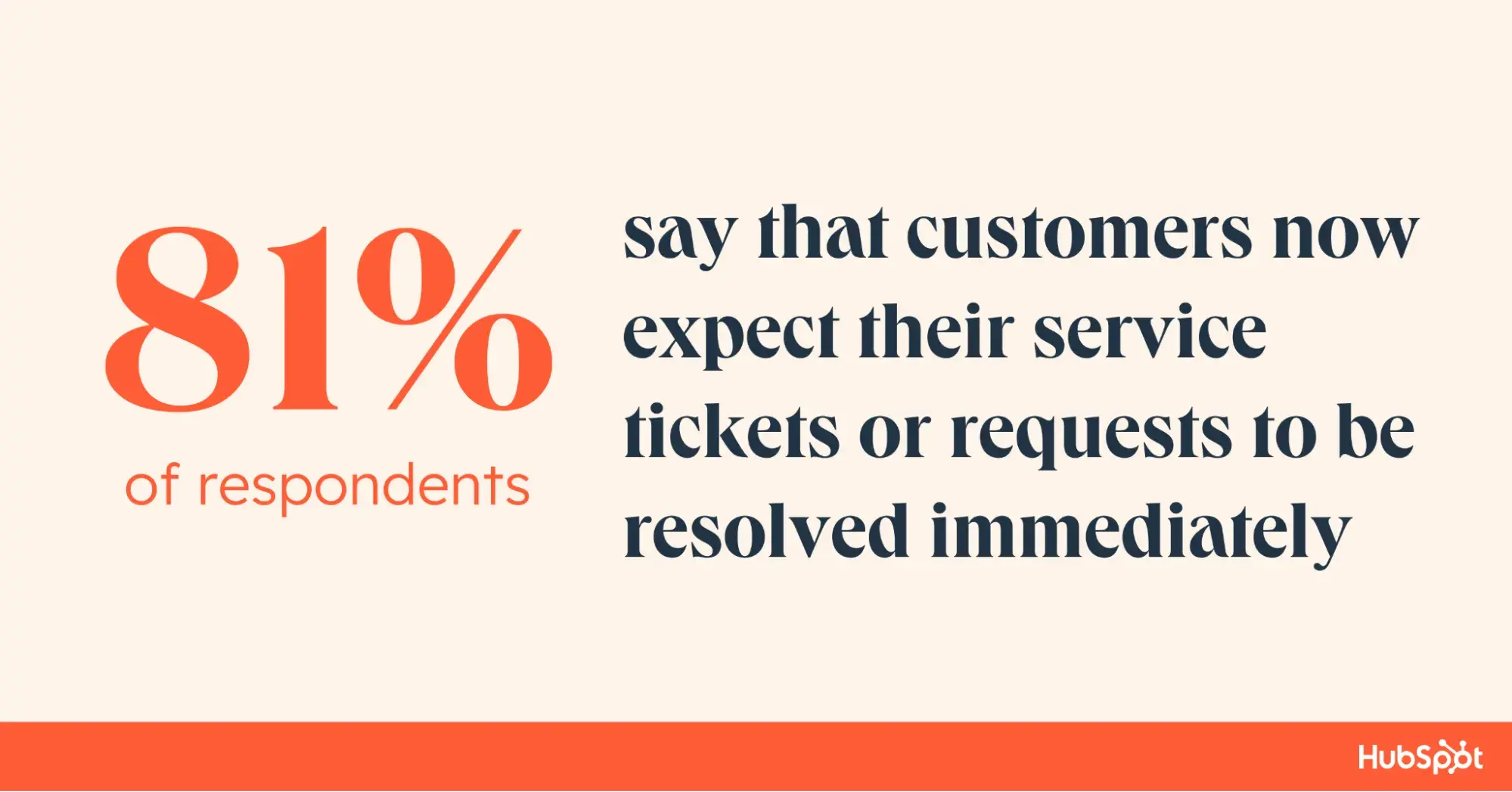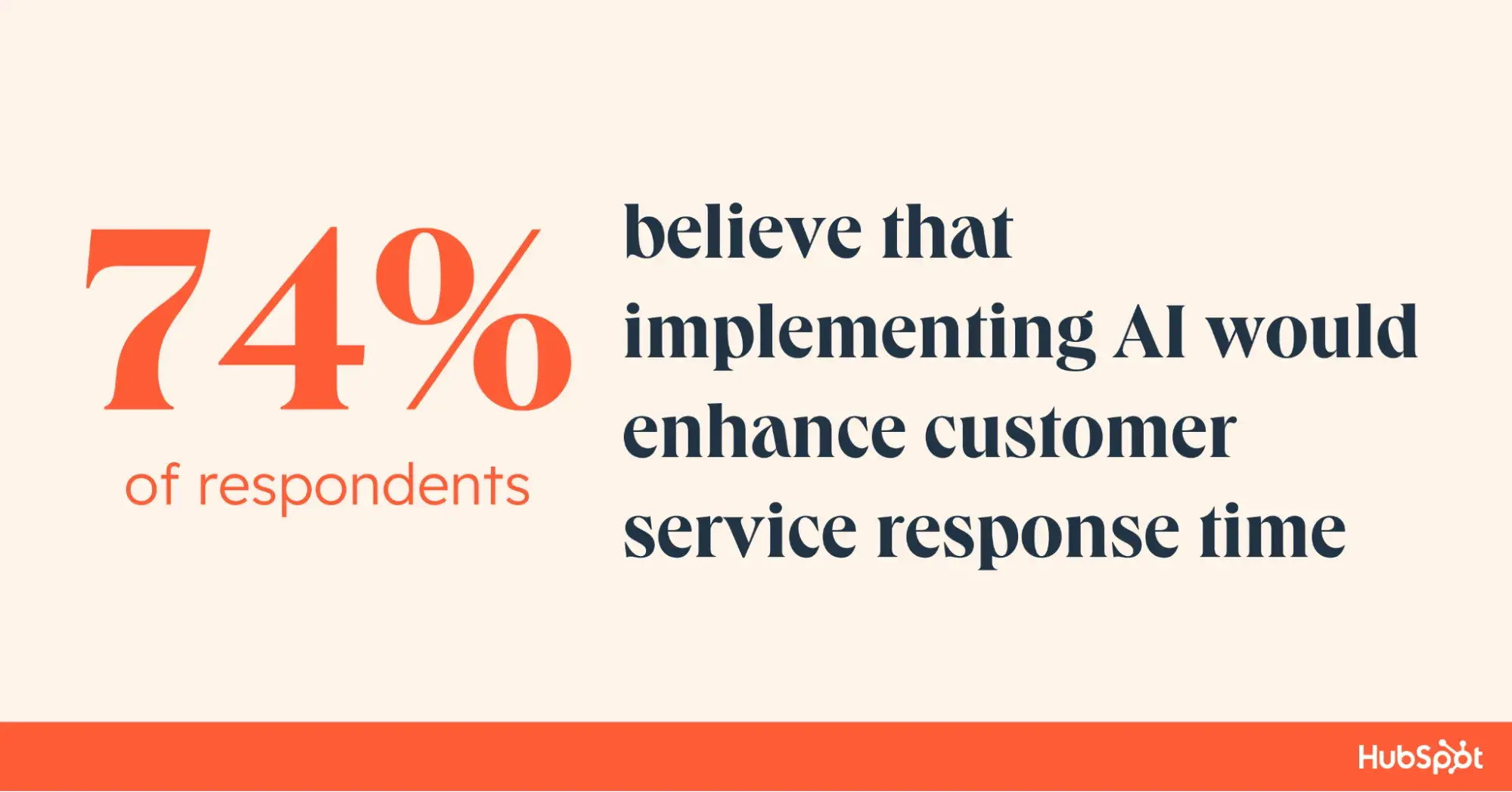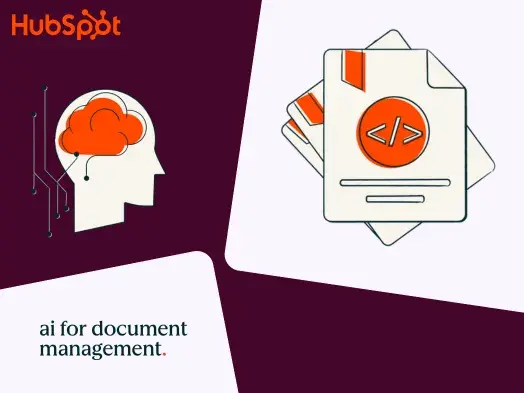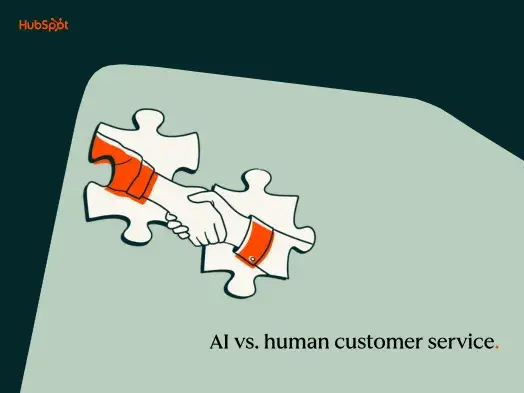Read on to discover eight ways AI can help solve common customer service problems.
8 Problems AI Solves in Service

1. Prioritizing Customer Needs
The top challenge for customer service leaders in 2024 is prioritizing customer requests. According to our survey, 75% of companies say ticket volumes are higher than ever. As service requests rise, it becomes more difficult to sift through incoming queries to identify the ones that require the most immediate attention.
How AI Solves This Problem
AI tools can analyze keywords and sentiment in incoming requests to identify those with high importance and then prioritize requests by the level of urgency. Once requests are sorted, reps can immediately address high-priority issues.
92% of reps say AI tools have helped them improve their customer service response time.
2. Time Management
Another challenge service leaders and agent-level reps reported is not having enough time in the day. Since reps handle multiple tasks of varying complexity, things add up, and addressing them can be challenging.
How AI Solves This Issue
AI can take over manual and routine tasks and automate processes so they happen instantly, no rep input necessary. Some tools, like chatbots, can handle entire tasks independently, while others take on smaller tasks to ensure reps aren’t spread as thin.
In fact, 73% of customers say they prefer self-service options to speaking with a real person, and 78% want to resolve their issues independently. To help facilitate this self-help scenario, 68% of companies say they will prioritize offering customers better tools to solve their own issues.
3. Wasted Time
The top frustration of consumers who responded to the National Customer Rage Survey was wasted time. According to the survey, 56% of customers who encountered an issue said it wasted their time, and 43% said it wasted their money. In combination, this adds up to a poor customer experience.
How AI Solves This Problem
AI/automation can help service teams significantly reduce the time customers spend waiting to get help because tools can be programmed to answer questions on their own.
For example, instead of waiting in a long phone queue, a machine-learning chatbot can quickly share return information with a customer.
In addition, tools like chatbots make it easy to offer 24/7 support so consumers can seek solutions right when they need them. For more pressing issues, a late-night chatbot can schedule a call back when a live agent becomes available to reduce the amount of time spent waiting the next day.
According to HubSpot data, 74% of respondents believe that implementing AI would enhance customer service response time.

4. Lack of Personalization
78% of consumers expect personalized experiences, but keeping track of unique customer information and buyer behavior can be time-consuming.
How AI Solves This Problem
AI makes personalization possible through automated consumer data tracking and record keeping, helping teams build well-rounded profiles of their customers. For example, HubSpot’s CRM automatically stores customer details, interaction history, and all relevant information in one place to give you the context to personalize experiences.
For example, you can input relevant information about your customer into your preferred generative AI tool and create personalized service content relevant to their needs, like product recommendations.
Service pros say that personalization is one of the biggest benefits of using AI in their roles, with 86% saying that AI enhances their ability to create personalized service responses, and 91% highlighting the ability of AI to analyze the sentiment of customer service conversations.
5. Collecting and Analyzing Customer Feedback
Customer feedback is the best way to learn about your business and the helpfulness of your service processes directly from those who use what you sell. But, feedback collection can be challenging, whether you’re unsure what to ask or spend too much time sifting through responses and calculating different metrics.
How AI Solve This Issue
Generative AI and customer feedback software can work together to streamline survey creation and feedback analysis. Gen AI can help you craft the perfect questions to include in your surveys, and feedback tools help you send out your surveys and automatically analyze results for you, surface key insights, and calculate important metrics like NPS.
90% of CS pros say that AI tools that collect and analyze customer feedback help them improve the customer experience.
6. Varied Customer Communication
How you communicate with customers is important, whether over email, phone, or in person. A problem can arise if there is no consistent communication style among support reps. Repeat support seekers might get confused by different tones from reps, and varying communication styles make it hard to compare post-support feedback.
How AI Solves This Issue
88% of reps say generative AI tools that help them write responses to customer service requests are “somewhat to very” effective.
Your preferred tool will help you be consistent across every aspect of customer communication, from call scripts to social media response templates. You’ll have a cohesive and consistent strategy, and reps will also have every template they need to communicate with customers across all channels.
And, every template you create can be further customized to each customer you share it with, helping you continue to prioritize personalization.
7. Reduced Costs
When customer acquisition and retention costs outstrip lifetime spending, businesses lose money. For example, if capturing a new customer costs $1,000 on average and keeping them costs $3,000, businesses only break even if customers spend at least $4,000.
If companies can decrease the cost of keeping customers happy, they can increase potential revenue. The challenge? Ensuring that cost-cutting measures don’t impact the quality or speed of service response times.
How AI Solves This Issue
Implementing tools such as chatbots, generative AI email tools, and self-service customer portals can reduce the time required for customer response and save companies money. By deploying AI, 85% of businesses improved their customer satisfaction scores (CSATs), and 59% spent less on customer service.
8. Scaling Service Processes
Service processes aren’t static. Business growth creates more customers, which in turn drives the need for improved service at scale.
Traditionally, delivering superior customer service meant hiring more customer service reps to work on-site or in call centers. Today, this approach creates two potential problems. The first is finding and onboarding staff. Depending on business needs, it can take weeks or months to recruit new service agents and bring them up to speed.
The second problem stems from the shift to digital processes. Even if staffing levels are stable, insufficient compute resources can frustrate service reps’ ability to access customer data, analyze service histories, and take effective action.
How AI Solves this Problem
AI solutions can take on tasks previously handled by customer service reps, and can augment the ability of staff to do their jobs.
For example, companies can use AI to build self-service knowledge bases that are continually updated. Or, they provide real-time insight into interactions while service agents speak with customers. And because many AI tools are cloud-based, businesses can easily scale services up (or down) as needed.
According to State of Service data, 85% of companies say that AI improved their ability to scale customer service operations.
Over to You
There’s an overlap between all the problems AI/automation tools can solve in customer service because most processes are connected.
Teams that adopt AI/automation into their customer service processes can reap the benefits throughout their entire strategy, regardless of the tools they use.
Editor's note: This article was originally published in June 2023 and has since been updated for comprehensiveness.
Artificial Intelligence








![How AI Can Unlock Customer Insights [+Expert Tips]](https://53.fs1.hubspotusercontent-na1.net/hubfs/53/customer-insights-ai-1-20241101-2082956.webp)



